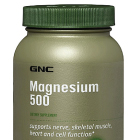 Q: What’s the deal with electrolyte drinks? Do they really help prevent cramping? And what about potassium?
Q: What’s the deal with electrolyte drinks? Do they really help prevent cramping? And what about potassium?
A: Electrolyte drinks may help. Electrolytes are chemical substances that when dissolved in water transform into ions, which are molecules that are involved in conducting electrical impulses throughout the body. If there is an electrolyte deficiency, the muscles will not be able to contract properly.
If you drink only plain water, the electrolytes in your tissues become diluted. To restore the electrolyte balance, the body must excrete this water through the kidneys, carrying electrolytes with it. Even so, there’s more to this story.
In a study published in the April ’05 Journal of Athletic Training, 13 college-age men with a history of exercise-associated muscle cramps participated in an experiment to determine how well electrolytes could prevent cramping in the calves. The authors concluded, “Consumption of a carbohydrate-electrolyte beverage before and during exercise in a hot environment may delay the onset of exercise-associated muscle cramps, thereby allowing participants to exercise longer.” The authors did note that 69 percent of the subjects still experienced cramping from their training, suggesting that addressing other factors, especially physical conditioning, is necessary to prevent cramping.
One of the best natural sources of electrolytes is coconut water; another option is to add an electrolyte-replacement mix to your water. As for some of the popular sports drinks, consider that water enters the cells through a process called osmosis. Sports drinks often have such a high concentration of sodium (to improve the taste) that the water cannot get into the cells—in effect, you are hydrated and dehydrated at the same time!
You asked about potassium. Potassium is an alkalizing mineral, and it is also associated with the prevention of muscle cramps. I like potassium citrate, which is highly absorbable.
Potassium deficiency is not the only mineral-related cause of cramping. Magnesium is involved in muscle contraction as well, and it is the most common mineral deficiency I see in athletes. One reason is that resistance training increases magnesium requirements. In fact, during the last 12 years not one of the first-time trainees I’ve worked with has had acceptable magnesium levels. Compromised absorption will generally keep you from having optimal levels.
Over the years, I have accumulated extensive research and experience in restoring magnesium levels, and I believe it’s best to use a combination of four different magnesium complexes: magnesium taurate, magnesium glycinate, magnesium fumarate and magnesium orotate. Adding vitamins E and D3 will also help.
Editor’s note: Charles Poliquin is recognized as one of the world’s most suc-cessful strength coaches, having coached Olympic med-alists in 12 different sports, including the U.S. women’s track-and-field team for the 2000 Olympics. He’s spent years researching European journals (he’s fluent in English, French and German) and speaking with other coaches and scientists in his quest to optimize training methods. For more on his books, seminars and methods, visit www.CharlesPoliquin.com. Also, see his ad on page 147. IM




















You must be logged in to post a comment Login